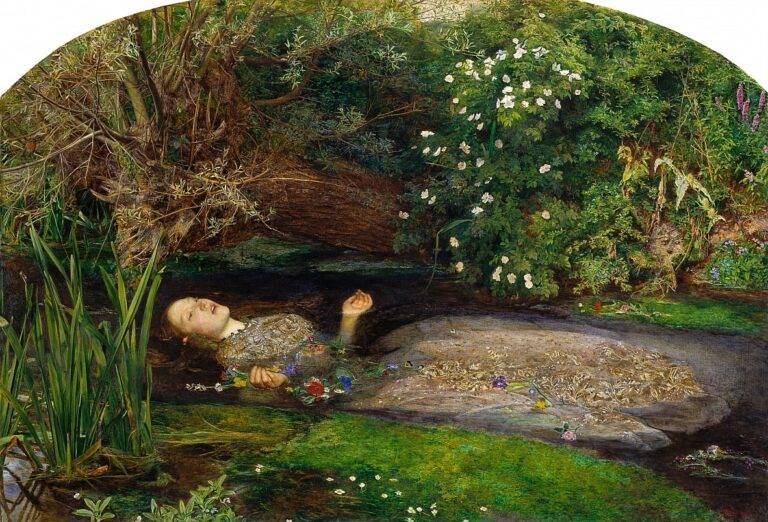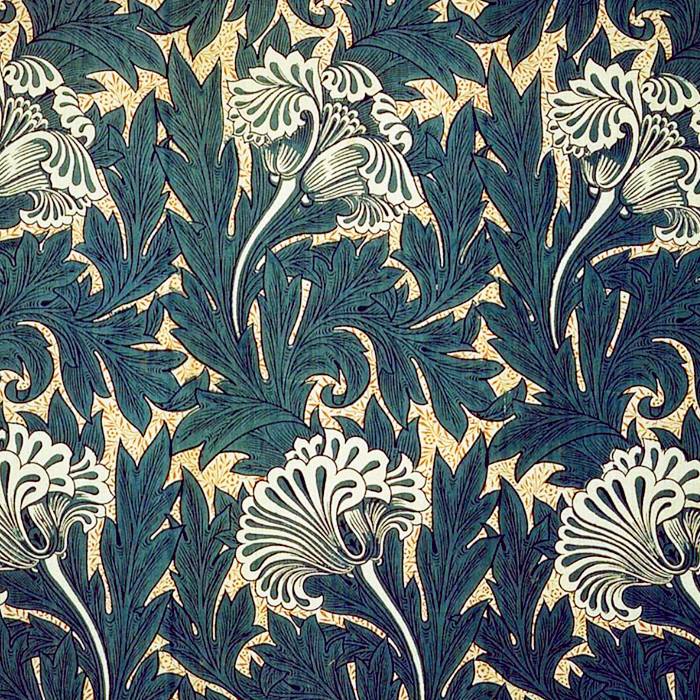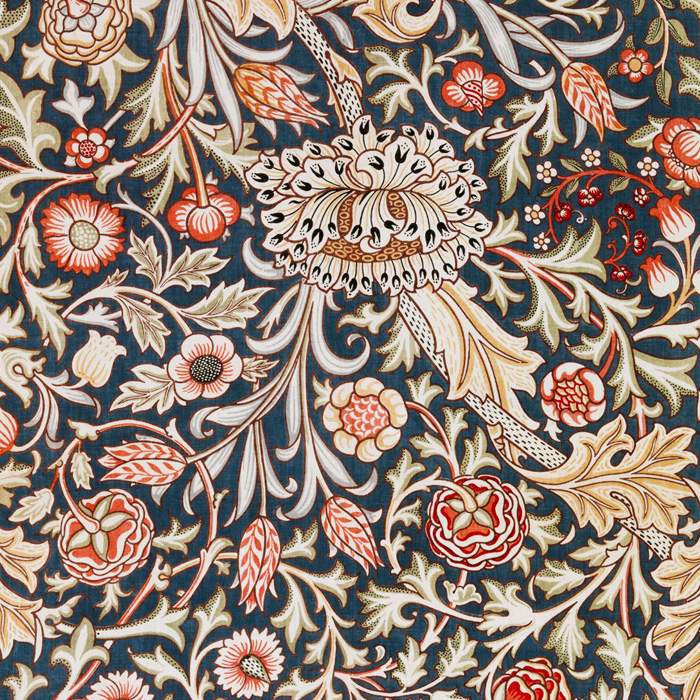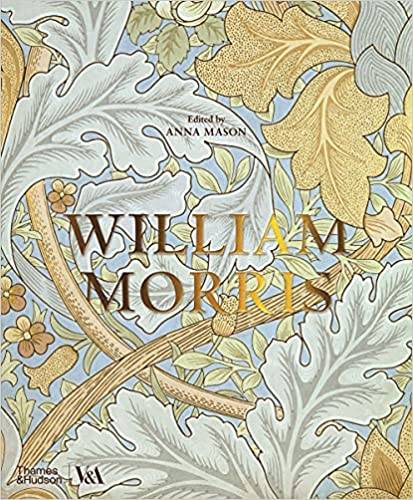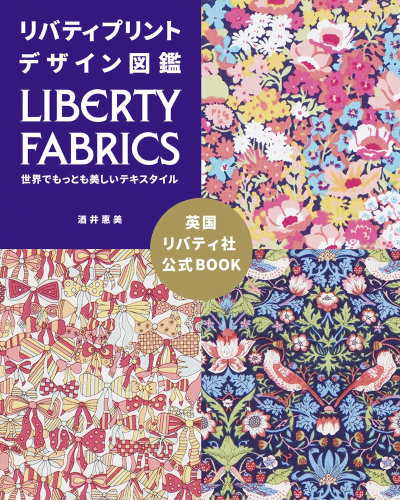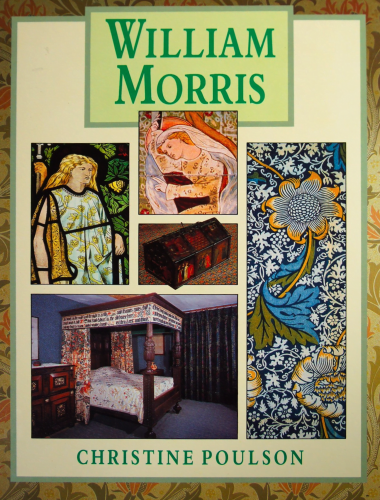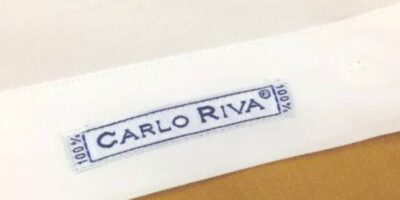Do you like Liberty print fabrics? These fabrics are sold by Liberty department stores and are probably one of the most famous printed fabrics in the world. They are one of the traditional British fabric patterns and are inseparable from British art. And when you hear that this design has something to do with Japanese culture, you may feel closer to it. This printed fabric is more than just a botanical pattern. It is truly a work of art, a fusion of East and West. In this chapter, we will study Liberty prints, and mention the artist William Morris and the Pre-Raphaelite Brotherhood, with whom he was associated. By the time you finish reading this topic, you will be hooked on Liberty Print.
We should first study William Morris, artist, thinker and business owner.
William Morris (1834-1896)
photograph of Sir Edward Burne-Jones (1833-98) and William Morris (1834-96) by Frederick Hollyer (1837-1933)
Morris was born in Walthamstow, Essex, England, into a wealthy family. He attended Oxford University, where he met the artist and designer Edward Burne-Jones, with whom he would collaborate on numerous projects throughout his life. After university, Morris trained as an architect, but ultimately decided to focus on designing textiles and other decorative objects.
In 1856, Morris began working as an apprentice to Gothic Revival architect G. E. Street. While working for Street, Morris became interested in traditional craft techniques, such as embroidery, weaving, and dyeing, and began experimenting with these techniques in his spare time. In 1861, Morris co-founded the decorative arts company Morris, Marshall, Faulkner & Co. (later known as Morris & Co.), which specialized in producing high-quality, hand-crafted furniture, textiles, and wallpaper. Morris designed many of the company’s products himself, and also worked with other notable artists and designers of the day.
In addition to his work as a designer, Morris was also a prolific writer and poet. He wrote several volumes of poetry, including The Defence of Guenevere and Other Poems (1858) and The Earthly Paradise (1868-70), as well as a number of novels and translations of medieval literature. Morris was also an active socialist and political activist, and was involved in a number of socialist organizations throughout his life. He believed that art and design should be accessible to all, and that the mass production of goods was harmful to both workers and consumers.
William Morris was closely associated with the Pre-Raphaelite Brotherhood, which was a group of artists, poets, and writers who sought to revive the artistic techniques and principles of the Italian Renaissance before Raphael. Morris was a close friend and collaborator of many of the movement’s leading figures, including Dante Gabriel Rossetti and Edward Burne-Jones. Morris first became involved with the Pre-Raphaelites when he met Rossetti at Oxford University in the early 1850s. Morris was impressed by Rossetti’s poetry and painting, and the two became close friends. Morris soon began contributing to the Pre-Raphaelite journal The Germ, and in 1857 he became a founding member of the Pre-Raphaelite Brotherhood, a group of artists who shared a commitment to medievalism and a rejection of contemporary art and design.
John Ruskin is a portrait of the leading Victorian art critic John Ruskin (1819–1900).[1][2] It was painted by the Pre-Raphaelite artist John Everett Millais (1829–1896) during 1853–54. John Ruskin was an early advocate of the Pre-Raphaelite group of artists and part of their success was due to his efforts.
Morris’s involvement with the Pre-Raphaelites continued throughout his career, and he collaborated with many of the movement’s leading artists on a variety of projects. Morris worked with Rossetti and Burne-Jones on the murals at the Oxford Union debating hall, and he designed textiles and other decorative objects for Rossetti’s home. Like many of the Pre-Raphaelites, Morris was interested in the medieval period, and he drew inspiration from medieval art and design in his work. He was also committed to reviving traditional craft techniques, such as weaving, embroidery, and printing, and he believed that these techniques could be used to create beautiful and functional objects that would be accessible to all.
Morris’s designs and ideas had a significant impact on the Arts and Crafts movement, which grew out of the Pre-Raphaelite movement in the late 19th century. Morris’s focus on hand-craftsmanship, attention to detail, and commitment to social justice and equality continue to influence artists and designers today.
The Arts and Crafts movement was a late 19th century movement that sought to revive traditional craft techniques and create beautiful, functional objects that were accessible to all. The movement was heavily influenced by the work of William Morris, who believed that art and design should be accessible to everyone, and that the mass production of goods was harmful to both workers and consumers. In addition to Morris’s interest in traditional craft techniques, the Arts and Crafts movement was also influenced by the aesthetic principles of Japanese art and design, which were introduced to Europe in the mid-19th century through the trade in Japanese goods. This style became known as Japonism.
Japonism had a significant impact on Morris and other members of the Arts and Crafts movement, who were drawn to the simplicity, elegance, and harmony of Japanese design. Morris was particularly interested in Japanese textiles, which he saw as a model for the kind of beautiful, hand-crafted objects that he was striving to produce. Morris’s textile designs were heavily influenced by Japanese patterns and motifs, and he incorporated elements of Japanese design into his furniture, wallpaper, and other decorative objects. Many other members of the Arts and Crafts movement were also influenced by “Japonism”, and Japanese motifs and patterns became a popular feature of Arts and Crafts design. However, the movement also sought to adapt and reinterpret these influences in a way that was consistent with their own principles of craftsmanship and social justice.
Pre-Raphaelite Brotherhood (Pre-Raphaelite MOVEMENT)
The Pre-Raphaelite Brotherhood (later known as the Pre-Raphaelites) was a group of English painters, poets, and art critics, founded in 1848 by William Holman Hunt, John Everett Millais, Dante Gabriel Rossetti, William Michael Rossetti, James Collinson, Frederic George Stephens and Thomas Woolner who formed a seven-member “Brotherhood” modelled in part on the Nazarene movement. The Brotherhood was only ever a loose association and their principles were shared by other artists of the time, including Ford Madox Brown, Arthur Hughes and Marie Spartali Stillman. Later followers of the principles of the Brotherhood included Edward Burne-Jones, William Morris and John William Waterhouse.
John Everett Millais
/ The Return of the Dove to the Ark, 1851
The group sought a return to the abundant detail, intense colours and complex compositions of Quattrocento Italian art. They rejected what they regarded as the mechanistic approach first adopted by Mannerist artists who succeeded Raphael and Michelangelo. The Brotherhood believed the Classical poses and elegant compositions of Raphael in particular had been a corrupting influence on the academic teaching of art, hence the name “Pre-Raphaelite”. In particular, the group objected to the influence of Sir Joshua Reynolds, founder of the English Royal Academy of Arts, whom they called “Sir Sloshua”. To the Pre-Raphaelites, according to William Michael Rossetti, “sloshy” meant “anything lax or scamped in the process of painting … and hence … any thing or person of a commonplace or conventional kind”. The group associated their work with John Ruskin, an English critic whose influences were driven by his religious background. Christian themes were abundant.
John Everett Millais
/ Ophelia
The group continued to accept the concepts of history painting and mimesis, imitation of nature, as central to the purpose of art. The Pre-Raphaelites defined themselves as a reform movement, created a distinct name for their form of art, and published a periodical, The Germ, to promote their ideas. The group’s debates were recorded in the Pre-Raphaelite Journal. The Brotherhood separated after almost five years
But it was William Morris and Edward Burne Jones who were strongly impressed by the Pre-Raphaelite Brotherhood movement, which was only five years old. They first read a review of the book by John Ruskins and were impressed by its beautiful John Everett Millais paintings and poetry.
The Pre-Raphaelite Brotherhood. Secondly
It is during the 1850s that Dante became associated with William Morris and Edward Burne Jones and together revived the brotherhood. They started painting art showing romanticism and aroused sensual feelings. Ford and Phillip later joined Morris, Dante and Burne in 1961 to form a decorative arts firm called Morris & Co. The firm revived handcrafting that emphasized the beauty of their art. William Morris had a significant impact during his lifetime because first, he relived the Pre-Raphaelite Brotherhood. Secondly, he started several movements, including the arts and crafts movement. This movement influenced metal works and ceramics, bookmaking, floral fabrics, ornamental objects, among other things. Indeed, he was an influential man. Moreover, he contributed to Victorian poetry, and some of his poems include the Earthly Paradise and The Defense of Guinevere.
Dante Gabriel Rossetti / Beata Beatrix
The life of Morris was not easy, especially when his wife decided to engage in an affair with Dante. However, he remained calm and concentrated his energy into writing some of the best novels today. He published cultural and political articles that were highly influential and interventional. He has also translated several texts including the Icelandic Sagas. He sponsored several publications from Oxford and Cambridge Magazine and was later invited to work there but refused. Well, he felt he could make a significant contribution if he worked somewhere else like starting and running the Society for the Protection of Ancient Buildings. He also founded Kelmscott Press which published his poem alongside those of Dante, Percy, Samuel and others. Kelmscott Maner was so motivating that he names his two websites after the name.
Unquestionably, Morris was after his happiness. Most are the times he started movements and ended them because they never contributed to his satisfaction. However, one thing is for sure; Morris loved nature art; Morris kept going back to it even after starting a political movement. In other words, he was both romantic and a revolutionist, and he concentrated on both in balance. He related his ideas to Pre Raphaelite oriented nature and the hope or fear for the future.
They started painting art showing romanticism and aroused sensual feelings. Ford and Phillip later joined Morris, Dante and Burne in 1961 to form a decorative arts firm called Morris & Co. The firm revived handcrafting that emphasized the beauty of their art. William Morris had a significant impact during his lifetime because first, he relived the Pre-Raphaelite Brotherhood. Secondly, he started several movements, including the arts and crafts movement. This movement influenced metal works and ceramics, bookmaking, floral fabrics, ornamental objects, among other things. Indeed, he was an influential man.
Red House is a significant Arts and Crafts building located in Bexleyheath,
Red House, located in Bexleyheath, south-east London, England, is an important Arts and Crafts building that was co-designed by architect Philip Webb and designer William Morris in 1859. Originally intended as a family home for Morris and his wife Jane, the house was completed in 1860 on a plot of land purchased in the village of Upton in Kent. Morris, who had studied at the University of Oxford, wanted to build a rural home that was within commuting distance of central London. He employed Webb, a friend, to help design and build the house, which was financed with money inherited from his wealthy family. Morris was heavily influenced by Medievalism and incorporated Neo-Gothic styles into the building’s design. The construction of Red House exemplifies Morris’ belief in craftsmanship and artisanal skills and is considered an early example of the Arts and Crafts movement.During his time at Red House, Morris received visits from a number of his friends, including Pre-Raphaelite painters Edward Burne-Jones and Dante Gabriel Rossetti, who assisted in decorating the house. Some of Burne-Jones’ murals remain in the house. Morris also established his design company, Morris, Marshall, Faulkner & Co., while living at Red House, and began creating his earliest wallpaper designs. His two daughters, Jenny and May, were born there.Despite his initial plans to live there for the rest of his life, Morris found that the cost of maintaining the house was too high and it did not fit his lifestyle. After five years, he sold the property and moved his family to a flat in Queen Square, Bloomsbury.
Unique in its design, Red House was designed to an L-shaped plan, with two stories and a high-pitched roof made of red tile. The large hall, dining room, library, morning room, and kitchen were located on the ground floor, while on the first floor were situated the main living rooms, the drawing room, the studio, and the bedrooms. The servants’ quarters were larger than in most contemporary buildings, reflecting the embryonic ideas regarding working class conditions which would lead Morris and Webb to become socialists in later life. Windows were positioned to suit the design of the rooms rather than to fit an external symmetry; thus a variety of different window types are present, including tall casements, hipped dormers, round-headed sash-windows, and bull’s eye windows. The house lacked any applied ornamentation, with its decorative features instead serving constructional purposes, such as the arches over the windows, and the louvre in the open roof over the staircase. According to Morris’ biographer J.W. Mackail, the external design of the house was “plain almost to severity, and depended for its effect on its solidity and fine proportion.” This was somewhat radical at the time, as most contemporary buildings were heavily furnished with ornamentation. Rosseti termed it “a real wonder of the age … which baffles all description”, while Morris biographer Fiona MacCarthy described it as “the ultimate Pre-Raphaelite building”.
Morris added to both the house’s interior and the design of the garden intermittently over the years, aided by his various friends. There was to be no wallpaper anywhere in the house, with the walls instead being painted or covered by tapestries. The walls of the staircase were intended to feature a painted mural by Burne-Jones depicting scenes from the Trojan War, while on the wall of the hall beneath was intended to be a picture of warships carrying the ancient Greek soldiers to Troy. Although depicting scenes from Classical mythology, Morris had wanted the designs to be Medieval in style, with the warships being based on those of the fourteenth century. On the hallway cupboard, Morris began (although never finished) a painting based on Thomas Malory’s tale of how Sir Lancelot brought Sir Tristram and La Belle Iseult to the castle of the Joyous Garde. The figures themselves are depictions of some of Morris’ friends, among them Jane, Faulkner, the Burne-Joneses, and Lizzie Siddel. In the dining room, Morris planned to decorate the walls with a series of embroidered female heroines, based in Geoffrey Chaucer’s The Legend of Good Women. Produced by Jane and her sister Bessie, only seven or eight were completed.
Around the walls of the drawing room, Morris had wanted a mural featuring a series of scenes from the fifteenth-century Middle English romance of Sir Degrevant. Ultimately, three were executed by Burne-Jones, and survive today; they feature Morris as king and Jane as queen. Over the fireplace, Morris had inscribed a Latin motto, “Ars longa vita brevis”, meaning “Life is short, but art endures.” The settle from Red Lion Square was installed here, on top of which was fashioned a minstrels’ gallery designed for Christmas concerts.Designs were pricked into the ceilings and then painted with simple, bold patterns.Commenting on the designs being introduced by his friend, in February 1862 Burne-Jones wrote that “Top [i.e. Morris] thrives through bandy, and is slowly making Red House the beautifullest place on Earth.”
It was while living at Red House, in April 1861, that Morris co-founded a decorative arts company, Morris, Marshall, Faulkner & Co., with six other partners: Burne-Jones, Rossetti, Webb, Ford Madox Brown, Charles Faulkner, and Peter Paul Marshall. Operating from a premises at No. 6 Red Lion Square, they referred to themselves as “the Firm” and were intent on adopting Ruskin’s ideas of reforming British attitudes to production. They hoped to reinstate decoration as one of the fine arts and adopted an ethos of affordability and anti-elitism. For additional staff, they employed boys from the Industrial Home for Destitute Boys in Euston, central London, many of whom were trained as apprentices.[64] Although working within the Neo-Gothic school of design, they differed from Neo-Gothic architects like Gilbert Scott who simply included certain Gothic features on modern styles of building; instead they sought to return completely to Medieval Gothic methods of craftman ship.
Morris, Marshall, Faulkner & Co. (1861–1875) was a manufacturer and retailer of furnishings and decorative arts founded by the artist and designer William Morris and his friends from the Pre-Raphaelite movement. Together with its successor Morris & Co. (1875–1940), the company’s medieval-inspired aesthetic, respect for hand-craftsmanship, and traditional textile arts had a significant impact on the decoration of churches and houses until the early 20th century.
Although its most influential period was during the Arts and Crafts Movement in the 1880s and 1890s, Morris & Co. continued to operate in a limited capacity from World War I until its closure in 1940. Today, the firm’s designs are still available under licenses granted to Sanderson & Sons, a part of the Walker Greenbank wallpaper and fabrics business (which owns the “Morris & Co.” brand), and to Liberty of London.
The success of Morris, Marshall, Faulkner & Co. was propelled by their impressive display at the 1862 International Exhibition, which gained significant attention. Over the next few years, the business flourished. However, in 1864 Morris became seriously ill and was forced to make a difficult choice between giving up his beloved home at Red House in Kent or giving up his work in London. Reluctantly, he decided to leave Red House and move his workshops to larger premises in Queen Square, Bloomsbury, where he also established his residence.
From the start, the decoration of churches was a significant aspect of the firm’s work. The demand for ecclesiastical decoration, particularly stained glass, increased during a period of church-building and remodeling by the Church of England in the 1840s and 1850s. However, this market declined during the general depression of the late 1860s, and Morris, Marshall, Faulkner & Co. began to focus more on secular commissions. They expanded their product line beyond painted windows and mural decoration to include furniture, metal and glass wares, cloth and paper wall-hangings, embroideries, jewelry, woven and knotted carpets, silk damasks, and tapestries.As early as 1862, Morris was creating repeating patterns for wallpaper. Six years later, he designed his first pattern specifically for fabric printing. In his characteristic fashion, Morris chose to work with the ancient technique of hand woodblock printing instead of the roller printing that had largely replaced it for commercial purposes.
Staffordshire dye works of Thomas Wardle, mastering the processes of that art and making experiments in the revival of old or discovery of new methods. One result of these experiments was to reinstate indigo dyeing as a practical industry, and generally to renew the use of those vegetable dyes, like madder, which had been driven almost out of use by the anilines.
Dyeing of wools, silks, and cottons was the necessary preliminary to what he had much at heart, the production of woven and printed fabrics of the highest excellence; and the period of incessant work at the dye-vat (1875–76) was followed by a period during which he was absorbed in the production of textiles (1877–78), and more especially in the revival of carpet-weaving as a fine art.In June 1881, Morris relocated his dyeworks from Queen Square to an early eighteenth-century silk-throwing works at Merton Abbey Mills, after determining that the water of the River Wandle was suitable for dyeing. The complex, on 7 acres (28,000 m2), included several buildings and a dyeworks, and the various buildings were soon adapted for stained-glass, textile printing, and fabric- and carpet-weaving.
In 1879, Morris had taught himself tapestry weaving in the medieval style and set up a tapestry workshop with his apprentice John Henry Dearle at Queen Square. Dearle executed Morris and Co.’s first figural tapestry from a design by Walter Crane in 1883. Dearle was soon responsible for the training of all tapestry apprentices in the expanded workshop at Merton Abbey, and partnered with Morris on designing details such as fabric patterns and floral backgrounds for tapestries based on figure drawings or cartoons by Burne-Jones (some of them repurposed from stained glass cartoons). and animal figures by Philip Webb. Suites of tapestries were made as part of whole-house decorating schemes, and tapestries of Burne-Jones angels and scenes from the Arthurian legends were a staple of Morris & Co. into the twentieth century.
In the early 1860s, Morris & Co. received its first commissions for stained glass and decorative schemes for churches, including St Michael’s Church in Brighton, All Saints Church in Selsley, and Jesus Chapel in Cambridge. These commissions came from the architect G F Bodley. In the late 1860s, the firm’s reputation was established through two significant secular commissions: the “green dining room” at the South Kensington Museum (now the Victoria and Albert) and a royal project at St. James’s Palace. The green dining room featured stained glass windows and panel figures by Burne-Jones, panels with branches of fruit and flowers by Morris, and olive branches and a frieze by Philip Webb. Morris & Co. also designed the windows at All Saints Church in the village of Wilden near Stourport-on-Severn in 1871.
Standen, a house near East Grinstead, West Sussex, was designed between 1892 and 1894 by Philip Webb and decorated with Morris carpets, fabrics, and wallpapers. Morris & Co.’s last major decorating commission before Morris’s death in 1896 was Stanmore Hall, which included a series of tapestries based on the story of the Holy Grail for the dining room. The rest of the work was executed under the direction of Dearle. Other Morris & Co. commissions include the ceiling within the dining room of Charleville Forest Castle in Ireland, the interiors of Bullers Wood House (now Bullers Wood School) in Chislehurst, Kent, and stained glass windows at Adcote.
In the 1870s, Morris began experimenting with plant dyes. His interest in natural dyeing techniques was further fueled by his work with Thomas Wardle, a printer and businessman specializing in Indian dyeing techniques.
As Morris pursued other interests, notably socialism and the Kelmscott Press, day-to-day work at the firm was delegated. Morris’s daughter May became the director of the embroidery department in 1885, when she was in her early twenties. Dearle, who had begun designing repeating patterns for wallpapers and textiles in the late 1880s, was head designer for the firm by 1890, handling interior design commissions and supervising the tapestry, weaving, and fabric-printing departments at Merton Abbey.Dearle’s contributions to textile design were long overshadowed by Morris. Dearle exhibited his designs under the Morris name rather than his own in the Arts and Crafts Exhibitions and the major Morris retrospective of 1899, and even today many Dearle designs are popularly offered as “William Morris” patterns. On Morris’s death in 1896, Dearle became the art director of the firm, which changed its name again, to Morris & Co. Decorators Ltd., in 1905.The company was still making good-quality stained glass into the 1920s: Holy Trinity Church, Elsecar, has several Morris & Co. windows dated 1922. Dearle managed the company’s textile works at Merton Abbey until his own death in 1932. The firm was finally dissolved in the early months of World War II.
A Note by William Morris on his Aims in Founding the Kelmscott Press
This book was edited from an 1896 publication in the Boston magazine Modern Art and was published in the spring of 1898 as the last book to be published by the Kelmscott Press. The woodcut was produced by Morris, using a mouthpiece designed by Burne-Jones for the unfinished 1860s Terrestrial Paradise.
liberty london department store
Arthur Lasenby Liberty was born in Chesham, Buckinghamshire, in 1843. He was employed by Messrs Farmer and Rogers in Regent Street in 1862, the year of the International Exhibition. By 1874, inspired by his 10 years of service, he decided to start a business of his own, which he did the next year. With a £2,000 loan from his future father-in-law, he accepted the lease of half a shop at 218a Regent Street with three staff members.The shop opened during 1875 selling ornaments, fabric and objets d’art from Japan and the East. Within eighteen months, he had repaid the loan and acquired the second half of 218 Regent Street. As the business grew, neighbouring properties were bought and added.[4] In 1884, he introduced the costume department, directed by Edward William Godwin (1833–86), a distinguished architect and a founding member of The Costume Society. He and Arthur Liberty created in-house apparel to challenge the fashions of Paris.In 1885, 142–144 Regent Street was acquired and housed the ever-increasing demand for carpets and furniture. The basement was named the Eastern Bazaar, and it was the vending place for what was described as “decorative furnishing objects”. He named the property Chesham House, after the place in which he grew up. The store became the most fashionable place to shop in London, and Liberty fabrics were used for both clothing and furnishings.
William Morris had a close association with Liberty & Co., a luxury department store in London, which was known for selling exotic goods and textiles from around the world. The founder of Liberty & Co., Arthur Lasenby Liberty, was a close friend of Morris, and the two shared a passion for design and craftsmanship. In the late 19th century, Liberty & Co. began selling Morris’ designs, which proved to be very popular with its customers. Morris’ designs, which were characterized by intricate patterns, bold colors, and a reverence for nature, were a perfect match for Liberty’s aesthetic. Liberty & Co. became the exclusive retailer for Morris & Co.’s fabrics and wallpapers. Morris’ designs were used to decorate many of Liberty & Co.’s interiors, and the store quickly became associated with Morris’ work. Morris’ designs were so successful at Liberty & Co. that the store eventually began to produce its own designs in a similar style. The store’s textiles, furniture, and other products were heavily influenced by Morris’ work, and the store became known for its Arts and Crafts style.
Today, Liberty & Co. continues to be a prominent luxury department store in London, and it still sells fabrics, wallpapers, and other products that are influenced by Morris’ designs. The store remains an important part of the legacy of William Morris and the Arts and Crafts movement.
The company became associated with this new style, to the extent that in Italy, Art Nouveau became known as the Stile Liberty, after the London shop.
Liberty art fabrics advertisement, May 1888
Liberty & Co. had its own printing works located in Merton, South London, where they printed their signature fabrics including Tana Lawn. The printing works were established in the 1890s and were equipped with the latest printing machinery and techniques.
Morris & Co. had a dyeing factory located in Merton Abbey, which was acquired by the company in 1881. The factory produced dyes and fabrics, and also provided employment for a large number of people. Morris & Co. also had its own printing studio located in Queens Square, Bloomsbury, where they printed many of their designs on fabrics, wallpapers, and other decorative items.
Both Liberty & Co. and Morris & Co. were known for their high-quality craftsmanship and attention to detail, and their printing and dyeing facilities were an important part of their ability to produce beautiful and unique fabrics and decorative items.
The Liberty department store in London played an important role in the Arts and Crafts movement. The founder of the store, Arthur Lasenby Liberty, was an admirer of the movement and wanted to offer his customers a range of beautiful and high-quality goods that were handcrafted and had a sense of individuality. In the late 19th and early 20th centuries, Liberty’s became known for its wide range of artistic and unique products, including fabrics, furniture, ceramics, and glassware. Many of these products were created by artisans associated with the Arts and Crafts movement, such as William Morris and his firm Morris & Co.
Liberty’s also collaborated with other artists and designers, including Archibald Knox, who created a range of silver and pewter objects for the store, and Jessie M. King, who designed fabrics, wallpapers, and other decorative items.Through its products and displays, Liberty’s helped to promote the ideals of the Arts and Crafts movement, including the importance of handcrafted objects and the use of traditional techniques and materials. The store’s influence on the movement extended beyond London, as many of its products and ideas were exported around the world.Liberty’s also collaborated with other artists and designers, including Archibald Knox, who created a range of silver and pewter objects for the store, and Jessie M. King, who designed fabrics, wallpapers, and other decorative items.Through its products and displays, Liberty’s helped to promote the ideals of the Arts and Crafts movement, including the importance of handcrafted objects and the use of traditional techniques and materials. The store’s influence on the movement extended beyond London, as many of its products and ideas were exported around the world.
WIlliam morris / liberty london
William Morris and Liberty of London have a strong and intertwined history, as both were pioneers in the Arts and Crafts movement of the late 19th century. William Morris, a designer, poet, and socialist, founded Morris, Marshall, Faulkner & Co. (later known as Morris & Co.) in 1861, with the aim of producing high-quality, handcrafted furnishings and textiles. Morris’s designs were inspired by nature and traditional craftsmanship, and he was known for his intricate and highly detailed patterns. Liberty of London was founded in 1875 by Arthur Lasenby Liberty, who had a vision of bringing the finest textiles and furnishings from around the world to London. Liberty’s vision was to create a store that celebrated craftsmanship and quality, and he quickly became known for his selection of fabrics, especially those from the East. The connection between Morris and Liberty began when Liberty began selling Morris’s hand-printed fabrics in their store in the 1880s. Morris’s designs were an immediate success, and the partnership between the two companies continued to grow. Liberty even began to commission Morris to create designs specifically for their store, which helped to cement his reputation as one of the leading designers of the Arts and Crafts movement.Today, Liberty continues to be known for its high-quality fabrics and prints, many of which are inspired by Morris’s designs. The company’s commitment to quality and craftsmanship remains a core part of its legacy, and its fabrics continue to be highly sought after by designers and consumers alike. Meanwhile, Morris’s legacy as a designer, poet, and social activist continues to inspire generations of artists and designers around the world.
IF You want to acesse about “liberty london” & “morris & co”. please take the button.
JAPANESE FOLK MOVEMENT IN JAPAN – 民藝運動
The Arts and Crafts Movement, with William Morris as one of its leading figures, emerged in Britain in the late 19th century as a reaction to the perceived negative effects of industrialization on traditional craftsmanship and design. The movement emphasized the value of handcrafted goods, high-quality materials, and the aesthetic beauty of everyday objects. Morris himself was deeply influenced by the medieval period and the natural world, and his designs often featured intricate patterns and motifs inspired by these sources.
The Mingei movement in Japan emerged in the early 20th century and shared some similarities with the Arts and Crafts Movement, particularly in its emphasis on traditional craftsmanship and the value of handmade goods. Mingei also emphasized the beauty of functional objects and everyday items, and sought to preserve and celebrate Japan’s rich cultural heritage.Despite their similarities, there were some key differences between the two movements. Mingei placed greater emphasis on the idea of anonymous craftspeople working in a collective tradition, whereas the Arts and Crafts Movement placed more emphasis on individual designers and artisans. Additionally, Mingei placed greater emphasis on the importance of simplicity and humility in design, whereas Arts and Crafts design tended to be more ornate and decorative.However, both movements were part of a broader global trend towards a renewed appreciation for traditional craftsmanship and design, and both sought to promote the value of handmade goods in a world increasingly dominated by mass-produced goods.
There is a connection between the Arts and Crafts movement in Britain, Morris, and the Mingei (Folk Crafts) movement in Japan. The Arts and Crafts movement emerged in the UK in the mid-19th century, partly as a reaction to the industrialization and mass production of goods. Morris and his colleagues sought to revive traditional craftsmanship and techniques and to promote the value of handmade goods. They also believed that good design could improve the lives of people, and that artists and craftsmen should work together to create beautiful, functional objects.The Mingei movement, which emerged in Japan in the early 20th century, had similar ideals. Its founder, Yanagi Soetsu, believed that folk crafts, which were made by anonymous artisans using traditional techniques and simple, natural materials, were an important expression of the cultural identity and values of a nation. He believed that these objects had a spiritual quality that was lacking in mass-produced goods.
The two movements were connected through the influence of Morris and his colleagues on the Japanese art world. Morris’s ideas about the importance of craftsmanship and design were widely admired in Japan, and his work was exhibited there in the late 19th and early 20th centuries. Some Japanese artists and designers, including Yanagi, were inspired by Morris’s ideas and sought to apply them to their own work. In particular, they were interested in the idea of the artist-craftsman, which Morris had championed, and the idea of creating beautiful, functional objects for everyday use.
The Japanese folk art movement “民藝運動” will be discussed in another chapter.





